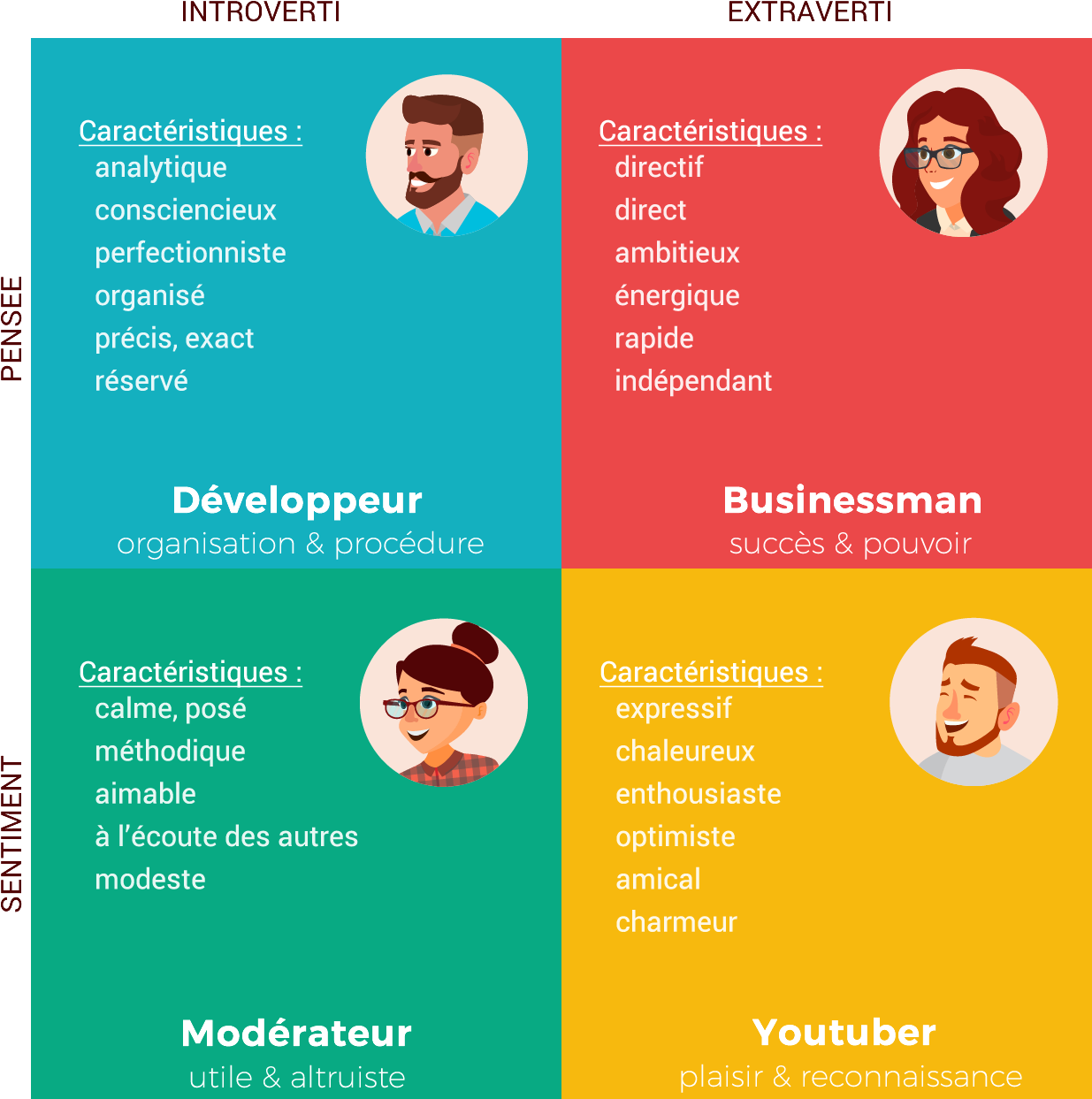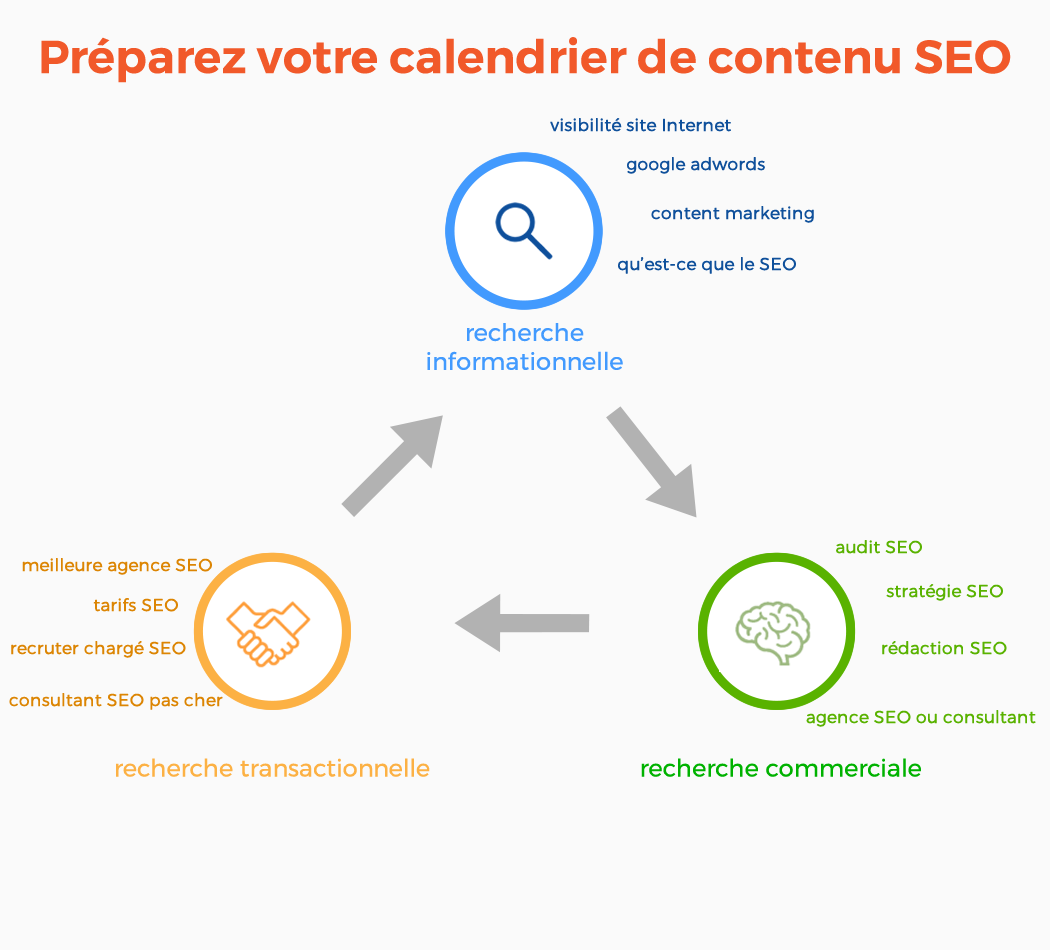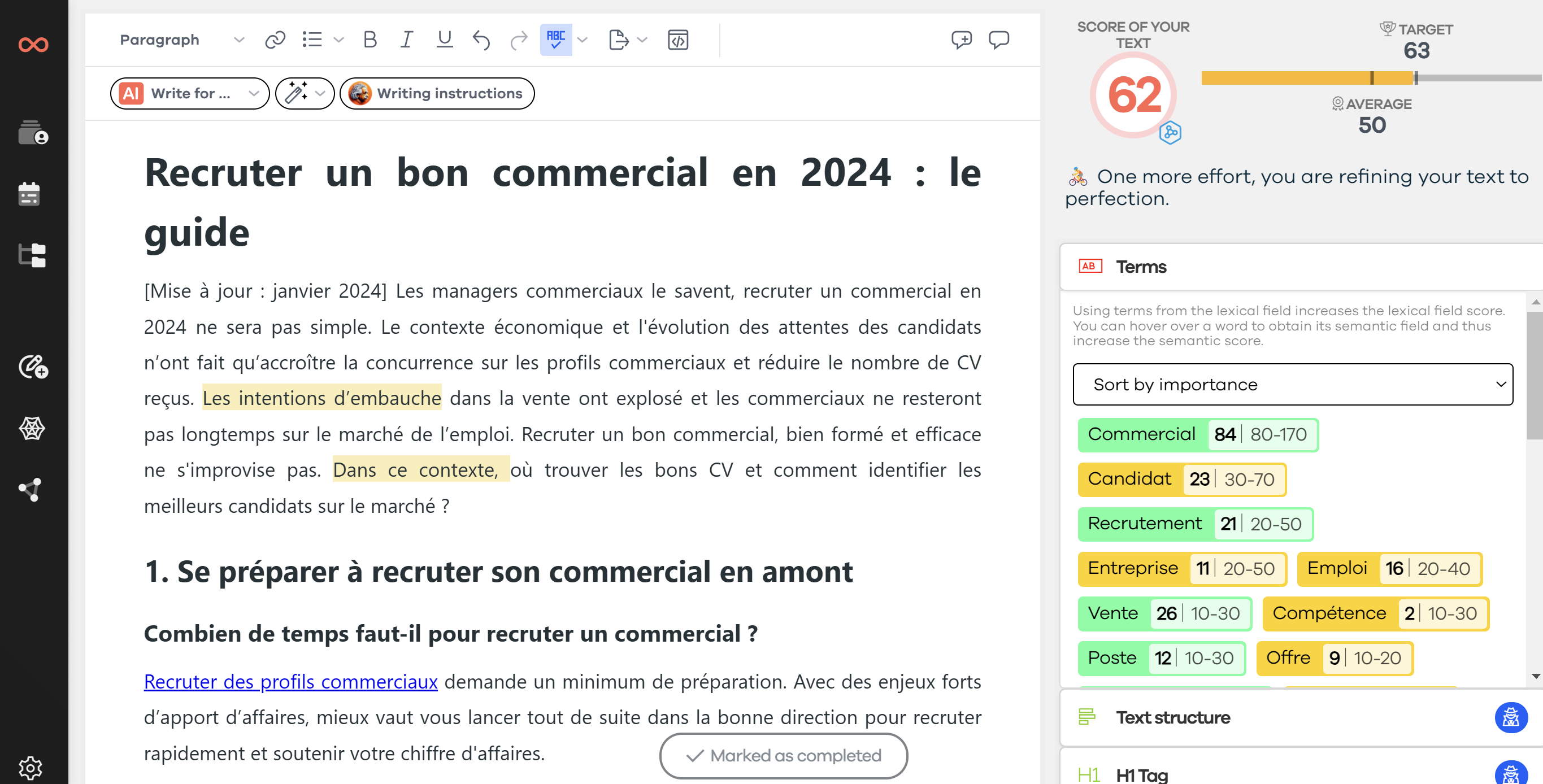When thoughtfully implemented, a content strategy proves to be a weapon of formidable efficiency. It gives businesses the opportunity to become their own media and thus to fully control the various stages of their development.
🚀 Express Reading: Summary of the 6 Steps to Implement a Content Strategy
- Step 1: Determine your objectives
- Step 2: Compare your identity and brand image
- Step 3: Identify your personas
- Step 4: Choose your editorial line
- Step 5: Create a content calendar
- Step 6: Adjust the content strategy
👨🏫 Definition of a Content Strategy
The content strategy, also known as editorial strategy, is the strong link in your content marketing. This strategic element allows you to plan your actions in the short, medium, and long term. To do this, you must create content that represents your brand (or company). Thus, you stand out from your competition by asserting your area of expertise and your own identity.
By implementing your content strategy, you always know what you are going to publish and why you are doing it. Moreover, it allows you to perfectly coordinate the work of your editorial teams and to offer consistency in your publications, both in substance and form.
💥 Importance of the Content Strategy
The content strategy is at the crossroads of customer expectations and company objectives. It is a way for the company to strengthen its positioning on topics directly related to its field of activity or close to it. While the Internet is overflowing with an ever-increasing amount of information, the content strategy allows:
- to increase the visibility of a company on search engines,
- to create quality traffic on its website,
- to build a strong brand image
- to find new customers,
- to retain its current clientele.
To achieve all these objectives, you must follow a precise methodology. Discover without further delay the 6 steps not to be missed to implement your content strategy.
🎁 6 Steps to Implement a High-Performance Content Strategy
These 6 steps can be divided into 3 distinct phases: theory (steps one to three), practice (steps four and five), and follow-up (step six).
Phase 1: Theory (objectives, company, and persona)
Before you start practicing, you need to do a brainstorming to define your objectives, compare your identity to your brand image, and identify the persona of your prospects and target customer groups.
Step 1: Define your objectives
There is obviously not a single method that could be copied and pasted indefinitely. Each structure has different needs, so the content strategy must be adapted to the company's objectives. It can indeed be implemented to
- generate sales more quickly,
- boost its visibility,
- disseminate information,
- provide advice to highlight its expertise on a subject or theme.
In other words, the content strategy allows you to convince, seduce or reassure your target audience in turn!
In marketing, it is customary to talk about SMART objectives:
- Specific
- Measurable
- Achievable
- Realistic
- Time-bound
These criteria allow companies to ensure that the defined objectives are linked to performance indicators and that they are perfectly aligned with the strategy they wish to implement.
Step 2: Compare your identity and brand image
"Know thyself," said Socrates! To implement an effective strategy, it is essential that the company has a perfect knowledge of itself. Each structure has a journey, values, and assets that differentiate it from its competitors. It is therefore essential to identify them precisely in order to communicate them to its customers.
Finally, the brand image also plays an important role. How is the brand perceived today? Does this perception correspond to reality? How does it want to be perceived tomorrow? The answers to these questions will lead the company to know itself better, but above all to better define its objectives and to have a better knowledge of the target it wishes to reach!
Step 3: Identify your personas

Let's talk about the target! It is impossible to implement a good content strategy without having identified your target beforehand. Indeed, knowing your objectives is not enough, you also need to know who you are going to address in order to work on both the form and the content of the disseminated content.
In the content marketing industry, we usually talk about "personas", fictional characters that help companies better understand
- the needs,
- the concerns,
- the expectations of their ideal customers.
To define the identity of their personas, some structures go as far as conducting market studies, analyzing their competition, and surveying their current clientele through questionnaires. The goal? To draw as accurate a portrait as possible of the target in order to personalize the content posted online and to segment it if necessary according to the number of identified personas.
The benefits of such an approach are multiple:
- visitors, happy to find the content that suits them, spend more time on the site,
- the bounce rate, which Google pays particular attention to, decreases,
- the conversion rate, on the other hand, increases.
Phase 2: Practice (editorial line and publication calendar)
The editorial line is the guiding thread of a content strategy that must be deployed across all different communication channels. Social networks, website, company blog... each channel has its own specificities and must meet the needs of one or more categories of personas.
To do this, it is therefore essential that they each have a specific editorial line. The goal for the company is to meet the expectations of customers while pursuing the objective(s) it has previously set!
Step 4: Choose your editorial line
To implement an editorial line, you must first define the type of content you want to publish, identify the most appropriate angle, and choose a suitable tone.
Depending on the needs and habits of its personas, a company may choose to publish white papers and long articles on its blog. On the other hand, another will opt for short messages, illustrated with photos and posted at a regular frequency on social networks.
Similarly, one will choose to disseminate information in a perfectly neutral manner while another will do so in a humorous way. Here again, the precise definition of the company's objectives and the identification of personas are therefore crucial!
However, whatever the nature of the published content (case studies, videos, articles, photos, interviews, contests, infographics, webinars), it is essential that it is in perfect harmony with the values of the company. This helps to perpetuate the link between the company and its customers.
Step 5: Create a content calendar

To plan the publication of different content, it is necessary to create a content calendar. This lists the channels and future content and allows for thoughtful definition of publication days and times. Thanks to this, companies can have a global vision of their strategy and above all retain personas in order to accompany them in their different life cycles.
Indeed, the customer's buying cycle is broken down into several stages, each with its own specificities and each requiring a particular form of communication.
Natural referencing is no longer just a simple optimization tool, it also becomes a planning support with a dedicated calendar integrated within the content calendar.
However, be careful! For this to truly serve the content strategy, it is important to deepen the research by identifying the intent hidden behind each popular keyword! Is the user looking for information? Does he want to navigate to a site? Does he want detailed instructions to perform a specific task? Is he ready to make a purchase?
These "micro-moments", as Google has dubbed them, are of crucial importance and they must absolutely be taken into account in the content creation and optimization phases.
Phase 3: Follow-up
A content strategy is in perpetual motion! Therefore, adaptability is an essential quality when seeking to implement a content strategy. Indeed, you must in a way allow yourself to fail in order to succeed better.
Sometimes certain distribution channels work better than others. Or a target may be more attracted to a particular type of content. In the beginning, small errors of judgment are common and they contribute, in their own way, to refining the strategy.
Step 6: Adjust your strategy
Thanks to Web Analytics, it is possible to transform these errors into valuable data.
- Identify the most popular keywords.
- Analyze search trends.
- Calculate the click-through rate.
It is then much easier to disseminate optimized content, in line with the company's objectives and the needs of the personas.
Web Analytics allow, among other things, to know the strengths and weaknesses of a strategy, but also to glean valuable information about visitor habits. Thanks to them, it is thus possible to adapt the publication of content to peak traffic times and thus be sure to transmit the right message at the right time!
However, there are obviously other ways to identify the best content opportunities. Monitoring on social networks allows, for example, to spot influencers as well as the most frequently recurring hashtags.
Moreover, a competitive watch also represents a significant source of information. By determining the most successful publications and analyzing the communication strategy of its rivals, it is indeed much easier to stand out.
In conclusion, there are countless possibilities to implement or refine a content strategy. The important thing is not to skip steps and above all to arm yourself with the right tools, including SEOQuantum of course!
Now it's your turn! Determine an objective, adapt your research to your identity and targets. Once this analysis work is done, define your editorial line and fill in your publication calendar. And keep us informed of the adjustments made during your follow-up!
If you need some inspiration before you start, feel free to discover a concrete case: example of a successful editorial strategy.
Need to go further?
If you need to delve deeper into the topic, the editorial team recommends the following 5 contents:

